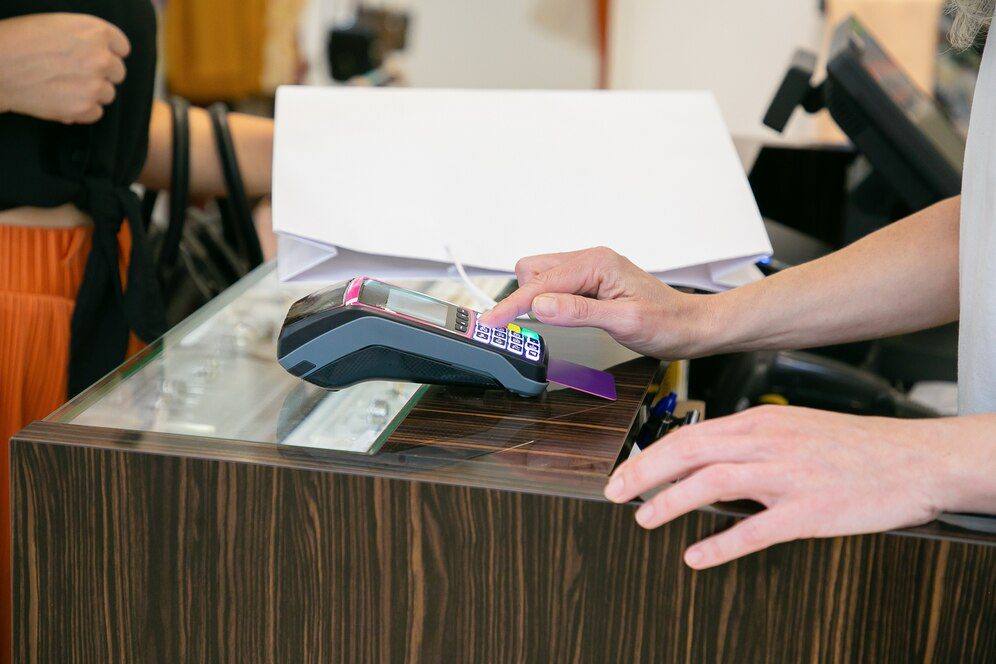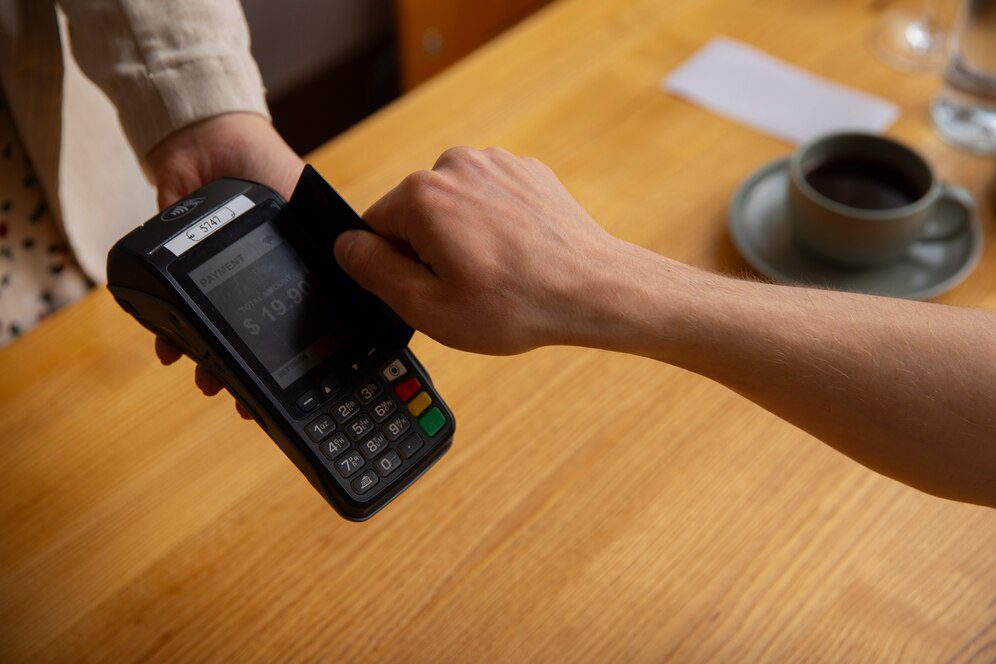
The Growing Convenience of POS Withdrawals
In today’s fast-paced digital economy, point-of-sale (POS) withdrawals have emerged as a crucial component of contemporary financial transactions. This innovative service enables customers to withdraw cash directly from a retailer’s POS terminal, effectively eliminating the need for traditional ATMs and providing a seamless, user-friendly experience.
Integrated seamlessly into existing POS systems, this feature significantly enhances the functionality of payment terminals, allowing businesses to offer both product sales and cash withdrawal services in a single, efficient transaction. By incorporating POS withdrawals, retailers not only elevate customer satisfaction by offering greater convenience but also streamline their operations and boost foot traffic. This multifaceted capability transforms the POS terminal into a vital resource for modern commerce, making it an invaluable addition for businesses seeking to adapt to the ever-evolving consumer landscape.
Defining POS Withdrawal
A POS (Point of Sale) withdrawal is a convenient financial transaction that enables customers to withdraw cash directly from a retailer’s POS terminal, rather than relying on an automated teller machine (ATM). This service is commonly available at various retail locations, including supermarkets, convenience stores, and other businesses that accept card payments.
The process of POS withdrawal differs significantly from traditional ATM transactions. Instead of utilizing a bank-operated machine, the cash is disbursed through the retailer’s payment terminal. When a customer opts for a POS withdrawal, the requested amount is deducted from their bank account or debit card balance, and the cashier subsequently hands over the cash. This method not only streamlines the cash withdrawal process but also provides a more personalized touch, as customers can interact directly with store staff.
Some advanced POS systems offer features that allow customers to request cash withdrawal while making a purchase, effectively combining two transactions into one seamless experience that was applicable by the use of a cloud-based POS system. This feature enhances the overall shopping experience, making it especially advantageous for consumers who prefer to minimize their time spent at the store.
Integrating cash withdrawal capabilities into POS systems significantly improves financial accessibility, particularly in areas where ATM services may be sparse or unavailable. For businesses, offering this service can lead to increased customer engagement and higher foot traffic, as customers are more likely to visit when they can access cash alongside their regular shopping needs. Ultimately, POS withdrawals present a win-win situation, benefiting both consumers seeking convenient cash access and retailers looking to enhance their service offerings.

How POS Withdrawals Work
A POS (Point of Sale) withdrawal provides customers with the ability to access cash directly from a retailer’s POS terminal, presenting a highly convenient alternative to conventional ATM transactions. This innovative service allows shoppers to seamlessly withdraw cash while they complete their purchases, eliminating the need to seek out an ATM.
Below is a step-by-step guide to how the process works:
Step-by-Step POS Withdrawal Process
- Customer Request – The customer approaches a merchant that offers POS withdrawal services and requests a cash withdrawal.
- Card Insertion/Tap/Swipe – The customer inserts, taps, or swipes their debit or credit card into the POS hardware terminal.
- Transaction Selection – The cashier or customer selects the cash withdrawal option on the POS system. Some systems may require the customer to enter the withdrawal amount.
- PIN Authentication – The customer enters their PIN (Personal Identification Number) to authorize the transaction, just like an ATM withdrawal.
- Transaction Processing – The POS machine communicates with the merchant’s bank and the customer’s issuing bank through a payment network (Visa, Mastercard, etc.) to validate the request.
- Cash Dispensation – Once the transaction is approved, the cashier hands over the requested cash to the customer.
- Receipt Generation – A receipt is printed or sent digitally, showing the withdrawal amount and any applicable fees.
Integration of Payment Cards with POS Machines
- Debit Cards – The most common method for POS withdrawals, allowing customers to access their bank funds directly.
- Credit Cards – In some cases, customers can withdraw cash using a credit card, but this is often treated as a cash advance, which may incur higher fees and interest charges.
- Digital Wallets – Some POS systems support withdrawals using linked digital wallets or QR-based transactions.
Role of Merchant Banks & Payment Networks
- Merchant Banks – Facilitate the transaction by connecting the retailer’s POS system with banking networks.
- Payment Networks (Visa, Mastercard, etc.) – Securely process and verify withdrawal requests, ensuring fund availability and fraud prevention.
- Issuing Banks – Deduct the withdrawal amount from the customer’s account and authorize the transaction.
By integrating POS withdrawals, businesses provide customers with greater financial accessibility while boosting in-store transactions, making it a valuable feature in the modern payment landscape.
Benefits of POS Withdrawals for Customers and Businesses
POS withdrawals provide a mutually beneficial solution for both customers and businesses, significantly improving accessibility, convenience, and financial efficiency. This seamless integration of banking and retail not only enhances the shopping experience but also fosters customer loyalty, as it caters to the growing demand for versatile payment options.
Convenience for Customers
- Easier Access to Cash – Customers can withdraw cash while shopping, eliminating the need to find an ATM.
- Time-Saving – Reduces the hassle of visiting an ATM, especially in areas with limited ATM availability.
- Secure Transactions – Transactions are processed within the store, reducing the risks of ATM fraud or skimming devices.
Advantages for Businesses
- Increased Foot Traffic – Customers seeking cash withdrawals are likely to make purchases, boosting sales.
- Improved Customer Loyalty – Offering additional services enhances customer satisfaction, encouraging repeat visits.
- Competitive Differentiation – Businesses that provide POS withdrawals stand out from competitors who do not offer this convenience.
Enhancing Cash Flow for Merchants
- Additional Revenue from Fees – Some businesses charge a small service fee per withdrawal, adding to their earnings.
- Better Cash Flow Management – Helps businesses reduce excess cash on hand, minimizing security risks.
- Encourages Spending – Customers withdrawing cash are more likely to use some of it for in-store purchases.
For businesses, POS withdrawals can increase foot traffic, boost sales, and lead to more satisfied customers, ultimately contributing to a healthier bottom line.
Security Features in POS Withdrawals
Ensuring secure transactions is a top priority in POS withdrawals, as these involve sensitive financial data. Advanced security measures are in place to protect both customers and businesses from fraud, data breaches, and unauthorized transactions.
Encryption & PCI Compliance
- End-to-End Encryption – Encrypts transaction data from the moment the card is inserted/tapped/swiped until it reaches the bank, preventing interception by fraudsters.
- Tokenization – Replaces card details with a unique digital token, ensuring that no real card data is stored or exposed.
- PCI DSS Compliance – POS systems must adhere to the Payment Card Industry Data Security Standard (PCI DSS) to ensure secure data handling and prevent breaches.
EMV Chip Technology for Secure Transactions
- EMV Chip Authentication – POS systems support EMV (Europay, Mastercard, Visa) chip cards, which generate a unique transaction code for every withdrawal, preventing card cloning.
- Reduced Fraud Risk – Unlike magnetic stripe cards, EMV chips make it difficult for hackers to replicate card data.
- Multi-Factor Authentication – Some systems require PIN entry or biometric verification for added security.
Best Practices for Businesses to Maintain Security
- Regular Software Updates – Keep POS software and firmware updated to patch security vulnerabilities.
- Employee Training – Train staff to recognize and prevent fraud, such as skimming devices or suspicious transactions.
- Limit Cash Availability – Set daily withdrawal limits to reduce the risk of large unauthorized transactions.
- Monitor Transactions – Use real-time monitoring and alerts to detect unusual withdrawal activity.
- Secure POS Devices – Ensure POS terminals are tamper-proof, placed in secure locations, and regularly inspected for unauthorized modifications.
By implementing these security features and best practices, businesses can enhance the safety of POS withdrawals while maintaining customer trust and regulatory compliance.

POS Withdrawal Limits and Fees
POS withdrawals come with transaction limits and fees set by banks, payment providers, and merchants. Understanding these limits and charges ensures a smooth transaction process for customers while providing financial benefits for businesses and banks.
Transaction Limits Set by Banks and Payment Providers
- Daily Withdrawal Limits – Most banks impose a daily cap on POS withdrawals, typically ranging from ₱1,000 to ₱10,000 (or more, depending on the bank and account type).
- Per-Transaction Limits – Some POS systems restrict the amount per withdrawal, often ₱500 to ₱5,000 per transaction, to manage cash availability.
- Merchant-Specific Limits – Retailers may set their own withdrawal limits based on their cash-on-hand policies.
- Regulatory Limits – Some countries impose government-mandated limits on POS cash withdrawals for security and financial monitoring.
How Fees Are Applied and Who Benefits
- Merchant Fees – Some businesses charge a small service fee (e.g., ₱10-₱50 per withdrawal) to cover processing costs and generate revenue.
- Bank Fees – Banks may impose withdrawal fees for out-of-network transactions, especially if the POS terminal belongs to a different bank.
- Customer Charges – Some fees are passed on to customers, either as a fixed charge or a percentage of the withdrawn amount.
- Payment Providers – Card networks like Visa, Mastercard, and local payment gateways may charge small processing fees for facilitating transactions.
Importance of Transparency in Communicating Fees
- Clear Fee Disclosure – Merchants should inform customers of any applicable fees before processing a withdrawal.
- Receipts with Fee Breakdown – Printed or digital receipts should itemize withdrawal amounts and fees to ensure transparency.
- Avoiding Hidden Charges – Customers should be encouraged to check with their banks regarding POS withdrawal fees and limits.
By understanding and managing POS withdrawal limits and fees, businesses can maximize revenue, banks can streamline cash access, and customers can enjoy a hassle-free cash withdrawal experience with full transparency.
The Future of POS Withdrawals
Emerging Trends: Contactless & Mobile POS Withdrawals
- Contactless POS Withdrawals – NFC-enabled POS systems will allow customers to withdraw cash using contactless cards or mobile wallets without inserting a physical card.
- Mobile POS Withdrawals – Banking apps and digital wallets (e.g., GCash, Maya, Apple Pay, Google Pay) may introduce app-based POS withdrawals, allowing users to request and authorize withdrawals through their smartphones.
- QR Code-Based Cash Withdrawals – Instead of swiping or tapping a card, customers could scan a QR code on the POS terminal to complete the transaction.
POS Withdrawals in Cashless Societies & Evolving Payment Ecosystems
- Bridging the Gap in Cash-Dependent Regions – While many countries push for a cashless economy, POS withdrawals remain crucial for regions where cash transactions are still dominant.
- Financial Inclusion for the Unbanked – Retailers offering POS withdrawals help individuals in rural or underserved areas access cash without an ATM.
- Seamless Banking Integration – POS withdrawals will become part of omnichannel banking, allowing users to withdraw funds directly from digital accounts, e-wallets, or crypto wallets.
Predictions for Expansion Across Industries
- Retail & Convenience Stores – More stores will adopt POS withdrawal services to enhance customer convenience and drive foot traffic.
- On-the-Go Services & Delivery – Mobile POS systems in ride-hailing, courier services, and food trucks may offer cash withdrawal features alongside digital payments.
- Healthcare & Government Services – Hospitals, clinics, and government offices may introduce POS withdrawal options for easy access to cash for emergency payments.
- Cross-Border & Travel Industry – POS withdrawals may extend to multi-currency transactions, allowing travelers to withdraw local currency directly from POS terminals.
With rapid technological advancements and increasing demand for flexible financial solutions, POS withdrawals will continue to play a significant role in bridging cash and digital payments, ensuring accessibility, security, and convenience in the evolving financial landscape.
As payment technologies evolve, POS withdrawals are expected to become more integrated, efficient, and secure. With the rise of cashless societies, businesses and financial institutions are adapting to emerging trends that enhance accessibility and convenience.



Leave A Comment